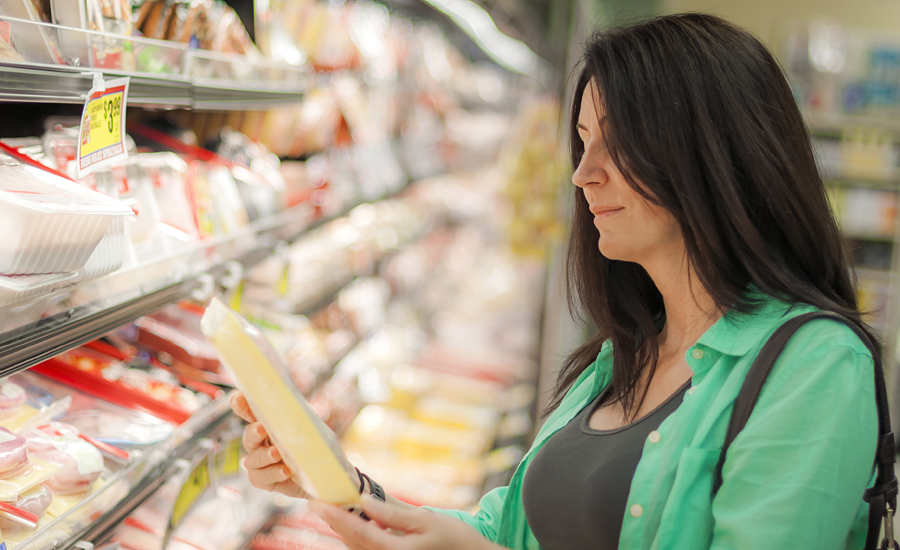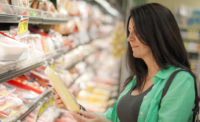Trend analysis highlights growth opportunities across retail channels
Grocery’s above-average year-over-year performance does mark a change for the CPG industry.

To gain a clear understanding of the rapidly changing consumer packaged goods (CPG) marketplace and the latest growth opportunities, IRI, Chicago, took a closer look at how consumers’ shopping patterns as well as emerging marketing programs are impacting retail channel trends in its granular analysis, “IRI Channel Performance Report.”
“It is becoming harder and harder to find growth opportunities in the CPG marketplace,” says Susan Viamari, vice president of thought leadership. “The path to purchase has forever changed. Shoppers are becoming increasingly demanding and embracing an omni-channel environment. And, they are funneling their spending to channels and retail banners that best deliver on their expectations. That’s why it is imperative for retailers and manufacturers alike to have a clear perspective on which channels and departments are performing well, so they can figure out which white-space opportunities will lead to growth.”
Grocery sales outperformed, yet remained flat
During the past year, CPG industry sales topped $760 billion. The grocery channel accounted for 41% of dollar sales and 51% of unit sales, and despite being flat, outperformed competing channels for the year.
Grocery’s above-average year-over-year performance does mark a change for the CPG industry. Club and dollar, for instance, outperformed grocery in average annual growth when measured over a 3-year period. From 2013-2016, club channel dollar sales rose 2.6% annually, while dollar channel sales climbed an average 2.5% per year. During the same time period, grocery sales grew 1.6% and industry sales rose 1.8%.
Just-in-time shopping impacts retail formats and channel selection
Quick trips account for more than half of all shopping trips. This has remained fairly unchanged during the past several years. But, retailers have been heavily investing in experimenting with new store formats, as they struggle to find new paths to profitability in an industry with razor-thin margins and intense competition. Smaller store formats, click-and-collect and subscription-based e-commerce programs are increasingly prevalent. The rise of the younger and more ethnically diverse generations, particularly Millennials, is also feeding change.
During the past three years, overall trips to grocery declined 1.7%. But, in calendar year 2016, trips to grocery climbed 1.3%. Club and dollar channels are seeing trips rise, while mass/super and drug are suffering multi-year declines.
E-commerce is making its mark
E-commerce share of CPG sales is still hovering in the single-digit range—right around 8% of sales. But, growth is fast and furious, leaving traditional brick-and-mortar retailers scrambling to protect and grow their share of a CPG pie that is not getting appreciably larger.
Across channels, retailers are sharpening their competitive skills and building out high-traffic aisles and departments, including snacks, beverages and frozen foods. As retailers continue to tinker with new formats and programs, the metamorphosis is expected to continue in the coming years.
Where different generations shop
No two shoppers are alike, but generational differences are often significant. Millennials and Generation X, for instance, prefer shopping the mass market/supercenter channel, and spend 44% and 16% more of their CPG dollars in this channel, respectively, than the average shopper. Younger Baby Boomers show above-average spending in the convenience channel, while seniors and retirees spend more heavily at drugstores.
Retailers attract shoppers with new store formats and personalization programs
For a number of years, the big-box retailers reigned supreme. Since growth has slowed, many retailers are downsizing and shifting toward smaller formats. These small-footprint stores—under 50,000 square feet compared to 110,000-plus square feet—allow retailers to move into more densely populated and underserved areas and combat online competition in areas like convenience, turnaround time and delivery.
Retailers are investing in personalization programs aimed at attracting and retaining key shoppers. They are using loyalty programs, social media and mobile apps to know more about their customers and tailor their offerings to specific tastes and behaviors. For instance, one store may find that many of its current shoppers are “foodies,” so it offers more gourmet and ethnic options that cater to these needs. With some changes in presentation and targeted marketing campaigns, a store can gain many new loyal customers.
“The pace of change in the CPG industry is quickening on a seemingly day-to-day basis,” adds Viamari. “Personalization has become a key to breaking through the marketplace noise. Shoppers demand to be recognized as individuals—with unique needs and wants—and they will vote with their wallets to reward CPGs that deliver solutions and marketing stories that resonate in their world.”
Looking for a reprint of this article?
From high-res PDFs to custom plaques, order your copy today!




